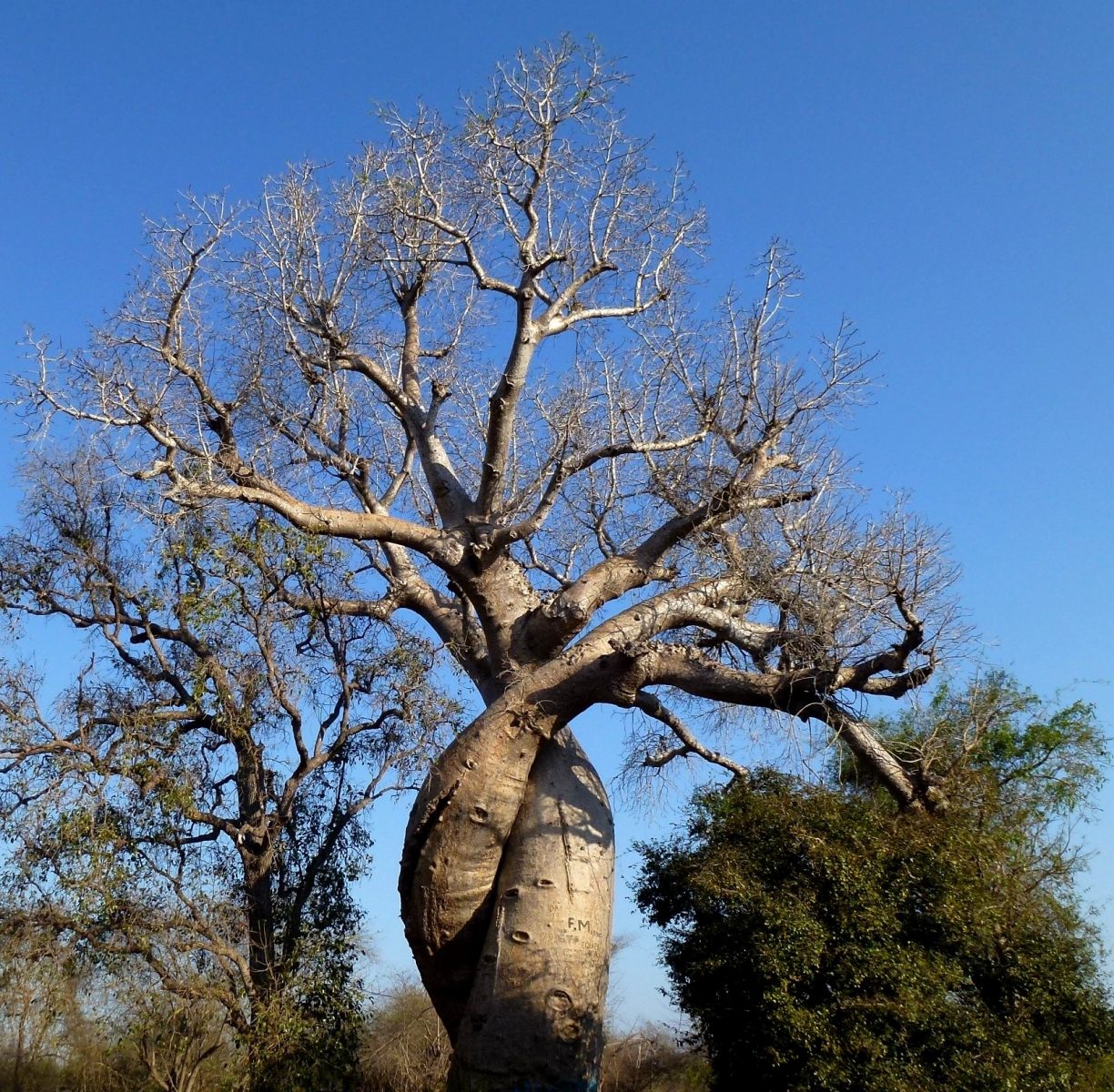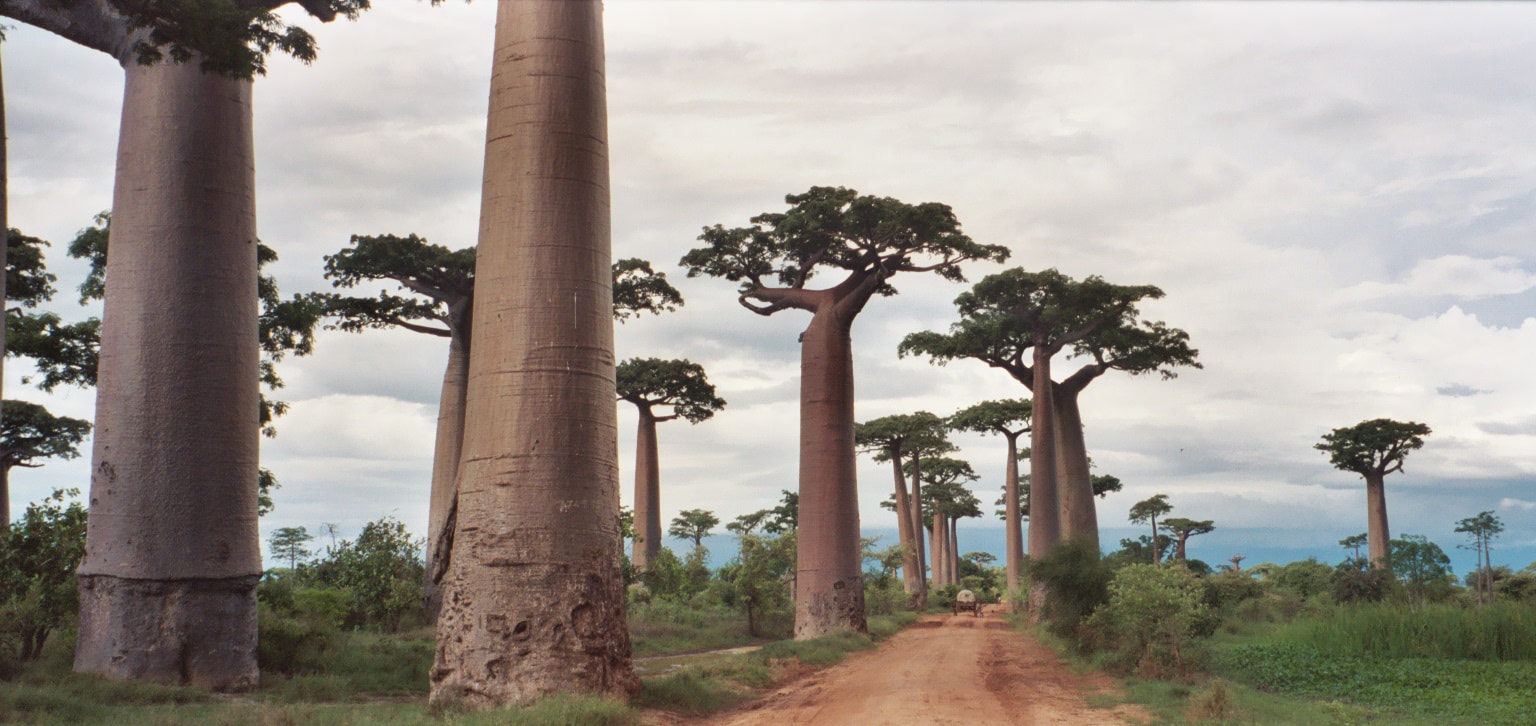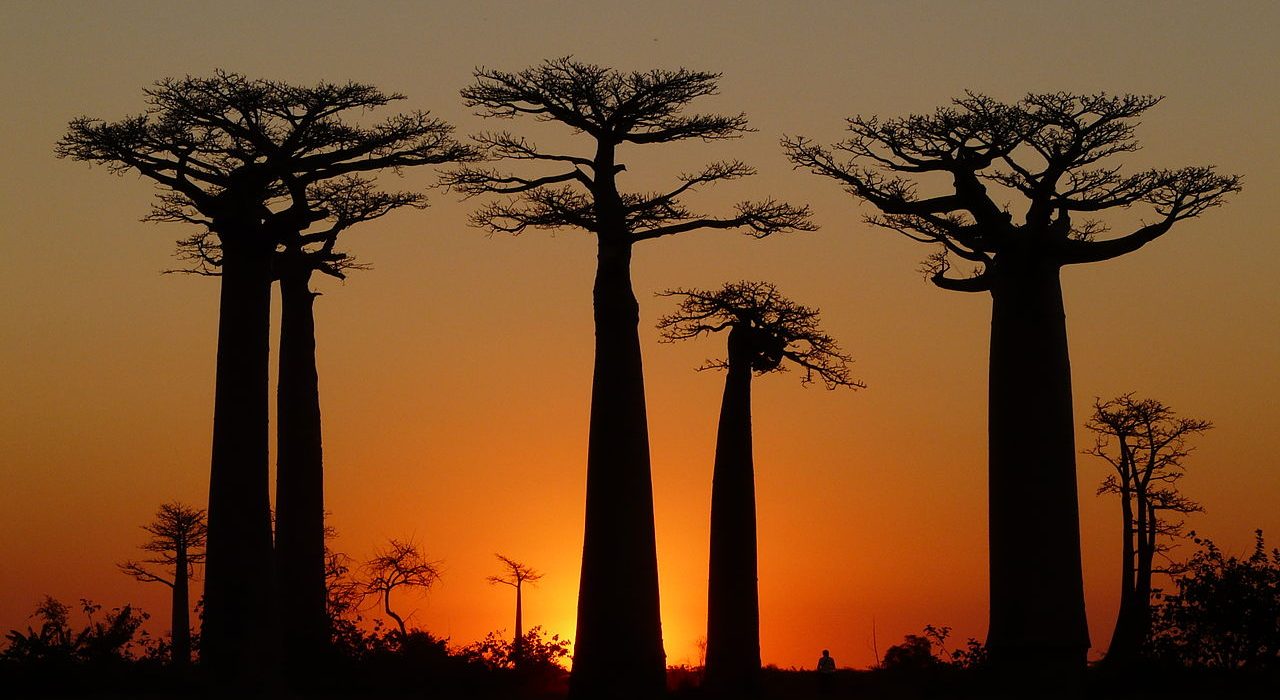In Menabe, Madagascar, there is a large, arid region that is abundant with a unique species of trees, the Adansonia granddieri. In that region, a dirt road which links the towns of Morondava to Belo Tsiribihina is lined with numerous and ancient baobab trees. This natural and majestic landscape, known as the “Avenue of Baobabs”, is considered so unique and beautiful that it could become the first, official indigenous monument of Madagascar. On the Avenue of Baobabs, there is also a sacred tree that is surrounded by offerings as well as two baobabs that have intertwined and have become known as “Les Baobabs Amoureux”. The views of this landscape at sunrise and sunset are heralded as striking.

These huge, deciduous trees, many of which are greater than 800 years old with trunks that measure over 150 feet around, had been previously part of a rich forest, filled with the other trees and plants. Community development, “advancement”, encroachment, mass modernization and growing populations have led to immense deforestation of the region.
Tragically, the devastation that has struck the Menabe community has extended beyond that region. In the summer of 2018, it was reported that nine of thirteen of the oldest and largest baobab trees in Africa have died since 2008. By utilization of radiocarbon dating to assess the trees’ ages, it has been determined that the trees were between 1,100 to greater than 2,500 years old. Speculation regarding their deaths has been credited primarily to global warming, either as a direct source or an indirect source, that rendered the trees susceptible to natural dangers including desiccation and disease. Because the numbers of the baobab trees in Africa are diminishing, farmers and agricultural scientists are researching ways, including branch-seedling grafting, that these ancient trees can be cultivated. Domestication, or the selection and cultivation of the best of these trees, will take many years.
Nine species of baobab trees exist still in the world: one grows in Asia; one grows is Australia; and the other seven grow in Africa. Of the seven species that grow in Africa, one grows in Senegal and the remaining six grow in Madagascar.
The extensive lifespan, humongous size, incredible utility and unique shape render the African baobab as a wonderfully amazing tree. The African baobab is also rare because it grows multiple stems that are fused together. What makes this tree incredible is that it provides more than three-hundred uses, according to Aida Cuni Sanchez in her article, “Baobabs are Africa’s Oldest and Most Beautiful Trees, but They’re Under Threat” published in the Independent, “Baobab trees have more than 300 uses but they’re dying in Africa”.
The author highlights that the tree is valued for its leaves, which are “… rich in iron, can be boiled and eaten like spinach. The seeds can be roasted to make a coffee substitute or pressed to make oil for cooking or cosmetics. The fruit pulp has six times more vitamin C than oranges, making it an important nutritional complement in Africa and in the European, US and Canadian markets … fruit pulp is made into juice, jam, or fermented to make beer. The young seedlings have a taproot which can be eaten like a carrot. The flowers are also edible. The roots can be used to make red dye, and the bark to make ropes and baskets.”
Baobab tree trunks, which are hollow, can be used for storage. During cycles of warm heat, the canopies of baobab trees may offer much-needed shade that provides coolness, especially when vendors and artisans are underneath them selling their wares. Baobab trees are integral to a community’s culture, ranging from products that hopefully provide a fair-trade income to being featured in marketing Afrocentric products. There is even a division of greeting cards named in the tree’s honor and the baobab is often featured in stories, oral and written, including the classic, The Little Prince, the best-selling book by Antoine de Saint-Exupéry.
While the baobab trees are essential to many humans in the community in which they grow, these deciduous trees are critical in supporting the ecosystem elements in the African savannas, which can be dry in certain seasons. These trees are of paramount importance because they provide a resource that can be found almost nowhere else on Earth.

The baobabs trees allow nutrients to be recycled and for greater retention of moisture in the soil. The trees, as per the entry, “Avenue of Baobabs”, of the Zambezi Safari and Travel Company, also provide important natural resources of “ … food, water and shelter for a wide range of animals, including birds, lizards, monkeys and even elephants – which can eat their bark to provide some moisture when there is no water nearby. The flowers are pollinated by bats, which travel long distances to feed on their nectar. Numerous insects also live on the baobab tree.” This forest, including its endemic flora, fauna and animals, is one of the most endangered globally.
When visiting the Avenue of Baobabs, you could also see the center of the Sakalava kingdom. A popular seaside resort, it also is an area known for growing rice and raising ostriches. Activities that visitors can engage in include swimming and snorkeling, shopping in the marketplace and dining in restaurants that serve local cuisine. There are also spectacular tombs in Morondava but, according to the Zambezi site, “… the people are quite secretive about their locations due to vandalism of the drawings and carvings on them.”




